45 label the different parts of the microscope
PDF Microscope Parts and Functions - WPMU DEV Microscope Parts and Functions Microscope One or more lenses that makes an enlarged image of an object. 8/7/2018 2 ... Always carry a microscope with one hand holding the arm and one hand under the base. Base Diaphragm A B ... different objectives. 4 - Slowly lower the cover slip on top of the drop. Cover Slip Lower slowly. microbenotes.com › parts-of-a-microscopeParts of a microscope with functions and labeled diagram Apr 19, 2022 · Figure: Diagram of parts of a microscope. There are three structural parts of the microscope i.e. head, base, and arm. Head – This is also known as the body. It carries the optical parts in the upper part of the microscope. Base – It acts as microscopes support. It also carries microscopic illuminators.
Microscope Parts and Functions Flashcards | Quizlet Holds the objective lenses and rotates to change the magnification. Scanning Lens Magnifies the image 4x and is found on the nosepiece Medium Power objective Magnifies the image 10x and is found on the nosepiece Slide Piece of glass we put objects on before viewing.

Label the different parts of the microscope
Microscope Parts, Function, & Labeled Diagram - slidingmotion A microscope is a laboratory instrument used to examine very small or micro-objects such as cells and microorganisms that are not able seen by the naked eye. What are the parts of the Microscope? Head Arm Base Eyepiece Lens Eyepiece Tube Objective Lenses Microscope Illuminator Stage and Stage Clips Microscope Nosepiece Rack Stop Condenser Lens Solved Activity 3. Parts of the Compound Microscope Using - Chegg Transcribed image text: Activity 3. Parts of the Compound Microscope Using the following diagram, label the different parts of the microscope. The parts of the microscope that you'll be using are the following, in random order: arm coarse adjustment knob stage condenser aperture lever fine adjustment knob clip (slide holder) condenser lamp (light source) light intensity control revolving ... › 6-label-the-microscopeLabel the microscope — Science Learning Hub Jun 08, 2018 · All microscopes share features in common. In this interactive, you can label the different parts of a microscope. Use this with the Microscope parts activity to help students identify and label the main parts of a microscope and then describe their functions. Drag and drop the text labels onto the microscope diagram. If you want to redo an ...
Label the different parts of the microscope. Compound Microscope Parts - Labeled Diagram and their Functions There are three major structural parts of a compound microscope. The head includes the upper part of the microscope, which houses the most critical optical components, and the eyepiece tube of the microscope. The base acts as the foundation of microscopes and houses the illuminator. The arm connects between the base and the head parts. Parts of a Microscope: Useful List of Microscope Parts with ESL Picture ... Microscope Parts with Their Functions. Body tube. Connects the eyepiece to the objective lenses. Revolving nosepiece. Holds two or more objective lenses and can be rotated to easily change power. Objective. Objective Lenses are the one of the most important part of a Compound Microscope. Stage clip. › iet › microscopeVirtual Microscope - NCBioNetwork.org Lesson Description BioNetwork’s Virtual Microscope is the first fully interactive 3D scope - it’s a great practice tool to prepare you for working in a science lab. Explore topics on usage, care, terminology and then interact with a fully functional, virtual microscope. Parts Of The Microscope Label Teaching Resources | TpT Science Workshop. $1.25. $1.24. Word Document File. Science worksheet: Label The Parts Of A Microscope2 VERSIONS OF WORKSHEET (Worksheet with a word bank & Worksheet with no word bank)Students have to identify and label parts of microscope (Mirror, Arm, Body tube, Diaphragm, Stage, Course Focus Knob, Clip, Fine Focus Knob ,Objective Lens,Eye ...
Solved Q5. Microscopy Label the different parts of the - Chegg Microscopy Label the different parts of the microscope and write the functions in the following table. (12 Marks) BIOLS 102 LAB COORDINATOR: MISS SAKINA MUSTAFA Part no. Name Function This problem has been solved! See the answer Show transcribed image text Expert Answer 100% (2 ratings) Compound Microscope: Parts of Compound Microscope - BYJUS The parts of the compound microscope can be categorized into: Mechanical parts; Optical parts (A) Mechanical Parts of a Compound Microscope. 1. Foot or base. It is a U-shaped structure and supports the entire weight of the compound microscope. 2. Pillar. It is a vertical projection. This stands by resting on the base and supports the stage. 3. Arm › p-3470-what-is-aWhat is a Compound Microscope? | Microscope World Blog The Parts & Function of a Compound Microscope A compound microscope is a high power (high magnification) microscope that uses a compound lens system. A compound microscope has multiple lenses: the objective lens (typically 4x, 10x, 40x or 100x) is compounded (multiplied) by the eyepiece lens (typically 10x) to obtain a high magnification of 40x ... Microscope parts — Science Learning Hub Microscope parts Resource Add to collection In this activity, students identify and label the main parts of a microscope and describe their function. By the end of this activity, students should be able to: identify the main parts of a microscope describe the function of the different parts of a microscope.
Labeling the Parts of the Microscope | Microscope World Resources Labeling the Parts of the Microscope This activity has been designed for use in homes and schools. Each microscope layout (both blank and the version with answers) are available as PDF downloads. You can view a more in-depth review of each part of the microscope here. Download the Label the Parts of the Microscope PDF printable version here. Difference Between Compound & Dissecting Microscopes 10.03.2018 · The dissecting microscope is also known as a stereomicroscope. Because it has a long working distance, between 25 and 150 mm, it has a lower magnification ability. This gives the user the option to manipulate the specimen, even performing small dissections under the microscope. Live specimens can also be observed. A typical student stereoscope can … Parts of a Microscope Labeling Activity - Storyboard That Three or four lenses with a range of different magnifications. Stage. A platform which holds the slide for observation. Slide. A thin piece of glass that holds the specimen. Focus Wheel. Used to bring the object in and out of focus. Lamp. Provides light to illuminate the specimen, sometimes a mirror is also used. Virtual Microscope - NCBioNetwork.org Lesson Description BioNetwork’s Virtual Microscope is the first fully interactive 3D scope - it’s a great practice tool to prepare you for working in a science lab. Explore topics on usage, care, terminology and then interact with a fully functional, virtual microscope. When you are ready, challenge your knowledge in the testing section to see what you have learned.
Guide to Teaching Kids About Cells | Science Explorers 25.04.2019 · These are the parts of the cell that perform various functions and allow for the cell’s independent operation. The cells also have different shapes to assist with their functions, such as blood cells compared to fat cells. However, they all share similar parts that allow the cell to do general tasks, such as create energy and protect itself.
Simple Microscope - Diagram (Parts labelled), Principle, Formula and Uses Simple microscope is a magnification apparatus that uses a combination of double convex lens to form an enlarged, erect image of a specimen. The working principle of a simple microscope is that when a lens is held close to the eye, a virtual, magnified and erect image of a specimen is formed at the least possible distance from which a human eye ...
Microscope, Microscope Parts, Labeled Diagram, and Functions 19.01.2022 · Revolving Nosepiece or Turret: Turret is the part of the microscope that holds two or multiple objective lenses and helps to rotate objective lenses and also helps to easily change power. Objective Lenses: Three are 3 or 4 objective lenses on a microscope. The objective lenses almost always consist of 4x, 10x, 40x and 100x powers. The most common eyepiece …
Parts of a Microscope - SmartSchool Systems If asked for the 14 parts of a microscope, it is generally because the three objective lenses are listed individually instead of as a group. Here are the details: All 11 Parts Listed Above - 12 minus #4 (Objective Lenses) 12. Low Power Objective Lens - generally 4x magnification 13. Medium Power Objective Lens - generally 10x magnification 14.
Figure 1 parts of a compound microscope 1 label the - Course Hero See Page 1. Figure 1: Parts of a compound microscope 1. Label the parts of the microscope in Figure 1 above and describe the function of each of the parts in the table below. Label Name of part Function a. Ocular Lens Re- magnifies the image formed by the objective lens. Ocular Lens Re - magnifies the image formed by the objective lens .
16 Parts of a Compound Microscope: Diagrams and Video Once you have an understanding of the parts of the microscope it will be much easier to navigate around and begin observing your specimen, which is the fun part! The 16 core parts of a compound microscope are: Head (Body) Arm Base Eyepiece Eyepiece tube Objective lenses Revolving Nosepiece (Turret) Rack stop Coarse adjustment knobs
What is a Compound Microscope? | Microscope World Blog The Parts & Function of a Compound Microscope A compound microscope is a high power (high magnification) microscope that uses a compound lens system. A compound microscope has multiple lenses: the objective lens (typically 4x, 10x, 40x or 100x) is compounded (multiplied) by the eyepiece lens (typically 10x) to obtain a high magnification of 40x, 100x, 400x and 1000x.
Simple Microscope - Parts, Functions, Diagram and Labelling Parts of the optical parts are as follows: Mirror - A simple microscope has a plano-convex mirror and its primary function is to focus the surrounding light on the object being examined. Lens - The biconvex lens is placed above the stage and its function is to magnify the size of the object being examined.
researchtweet.com › microscope-parts-labeledMicroscope, Microscope Parts, Labeled Diagram, and Functions The description given below summarize the brief description of microscope parts used to visualize the microscopic specimens such as animal cells, plant cells, microbes, bacteria, viruses, microorganisms etc. The Microscopes parts divided into three different structural parts Head, Base, and Arms.
DOC Parts of a Microscope: Label using the word bank provided Parts of a Microscope: Use page R8 in the back of your textbook to label the diagram below. Calculating Total Magnification. To calculate the total magnification, multiply the magnification of the ocular lens and objective lens. Example: A microscope has a 10x ocular and a 20x objective lens. The total magnification is 200x . 1.
Stereo Microscope Parts A stereo microscope has three key parts: Viewing Head/Body that houses the optical components in the upper part of the microscope. Focus Block that attaches the microscope head to the stand and focuses the microscope. Stand that supports the microscope and houses any integrated illumination. Stereo microscopes are increasingly modular.
PDF Parts of a Microscope Printables - Homeschool Creations Parts of a eyepiece arm stageclips nosepiece focusing knobs illuminator stage objective lenses head base Label the parts of the microscope. You can use the word bank below to fill in the blanks or cut and paste the words at the bottom. Microscope Created by Jolanthe @ HomeschoolCreations.net eyepiece head objective lenses arm focusing knob base ...
sciencing.com › difference-between-compoundDifference Between Compound & Dissecting Microscopes Mar 10, 2018 · The dissecting microscope is also known as a stereomicroscope. Because it has a long working distance, between 25 and 150 mm, it has a lower magnification ability. This gives the user the option to manipulate the specimen, even performing small dissections under the microscope. Live specimens can also be observed.
Microscope Parts & Functions - AmScope Body: Often referred to as the head, the body is the upper part of a microscope including, eyepieces and objectives. Most modern microscopes are modular in the sense that the same body can be used with different bases and vice versa.
depts.washington.edu › vurchinWelcome to Virtual Urchin - University of Washington 1. microscope basics. microscope tutorial: microscope measurement: ... (and only in Parts 1-3 of that activity). We're working to expand the choices. If you choose a ...
Fluorescence Microscopy - Explanation and Labelled Images 16.12.2020 · The main parts of a fluorescent microscope overlap with the traditional light microscope. However, there are two main features that sets fluorescent microscope apart from the traditional microscope. One is the type of light source and the other is the use of specialized filter elements. A fluorescence microscope uses a higher intensity light to illuminate the …
Label the Parts of a Microscope Flashcards | Quizlet Start studying Label the Parts of a Microscope. Learn vocabulary, terms, and more with flashcards, games, and other study tools.
Microscope slide - Wikipedia A microscope slide is a thin flat piece of glass, typically 75 by 26 mm (3 by 1 inches) and about 1 mm thick, used to hold objects for examination under a microscope.Typically the object is mounted (secured) on the slide, and then both are inserted together in the microscope for viewing. This arrangement allows several slide-mounted objects to be quickly inserted and …
Label the microscope — Science Learning Hub 08.06.2018 · All microscopes share features in common. In this interactive, you can label the different parts of a microscope. Use this with the Microscope parts activity to help students identify and label the main parts of a microscope and then describe their functions.. Drag and drop the text labels onto the microscope diagram. If you want to redo an answer, click on the …
Parts of the Microscope with Labeling (also Free Printouts) Let us take a look at the different parts of microscopes and their respective functions. 1. Eyepiece it is the topmost part of the microscope. Through the eyepiece, you can visualize the object being studied. Its magnification capacity ranges between 10 and 15 times. 2. Body tube/Head It is the structure that connects the eyepiece to the lenses.
Compound Microscope Parts, Functions, and Labeled Diagram The individual parts of a compound microscope can vary heavily depending on the configuration & applications that the scope is being used for. Common compound microscope parts include: Compound Microscope Definitions for Labels Eyepiece (ocular lens) with or without Pointer: The part that is looked through at the top of the compound microscope ...
Pond Water Under the Microscope Here, students can sketch down what they observe and later label the different parts of the organisms. Conclusion. The primary goal here is for students to observe for themselves the different types of small organisms, which live in the pond and their diversity. Making rough sketches allows them to draw what they see and how they see them.
parts of a microscope labeling - TeachersPayTeachers This interactive Slides activity focuses on the Parts of a Microscope. The post actually contains three assignments all-in-one. Slide #1 is a drag-and-drop, slide #2 is labeling with a word bank, and slide #3 and labeling without a word bank. Slide #4 contains the answer key.
Parts of a microscope with functions and labeled diagram 19.04.2022 · Figure: Diagram of parts of a microscope. There are three structural parts of the microscope i.e. head, base, and arm. Head – This is also known as the body. It carries the optical parts in the upper part of the microscope. Base – It acts as microscopes support. It also carries microscopic illuminators.
Using A Microscope 101: Important Microscope Parts & Functions The Basic Components Of A Microscope Three microscope parts make up the frame of the device. Base The base is the large piece that supports the microscope. You need to keep your microscope steady to get a clear image of what you want to magnify. This is why the base is an important part. The size of the base depends on how heavy the microscope is.
Microscope Parts and Functions All of the parts of a microscope work together - The light from the illuminator passes through the aperture, through the slide, and through the objective lens, where the image of the specimen is magnified.
› 6-label-the-microscopeLabel the microscope — Science Learning Hub Jun 08, 2018 · All microscopes share features in common. In this interactive, you can label the different parts of a microscope. Use this with the Microscope parts activity to help students identify and label the main parts of a microscope and then describe their functions. Drag and drop the text labels onto the microscope diagram. If you want to redo an ...
Solved Activity 3. Parts of the Compound Microscope Using - Chegg Transcribed image text: Activity 3. Parts of the Compound Microscope Using the following diagram, label the different parts of the microscope. The parts of the microscope that you'll be using are the following, in random order: arm coarse adjustment knob stage condenser aperture lever fine adjustment knob clip (slide holder) condenser lamp (light source) light intensity control revolving ...
Microscope Parts, Function, & Labeled Diagram - slidingmotion A microscope is a laboratory instrument used to examine very small or micro-objects such as cells and microorganisms that are not able seen by the naked eye. What are the parts of the Microscope? Head Arm Base Eyepiece Lens Eyepiece Tube Objective Lenses Microscope Illuminator Stage and Stage Clips Microscope Nosepiece Rack Stop Condenser Lens
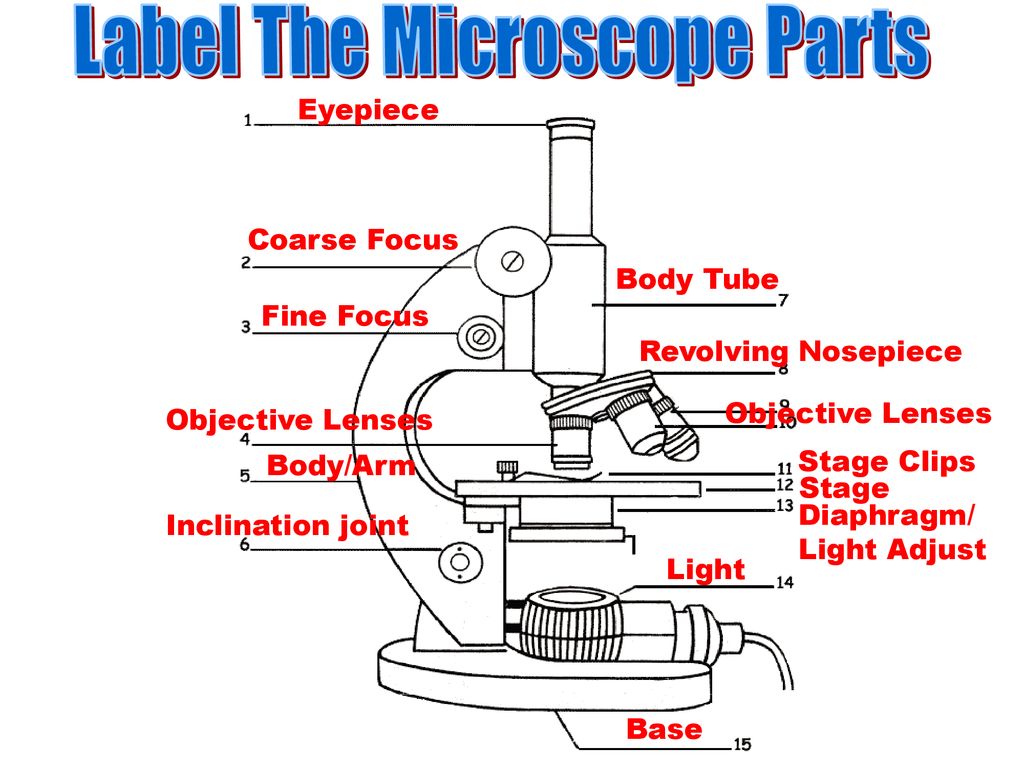
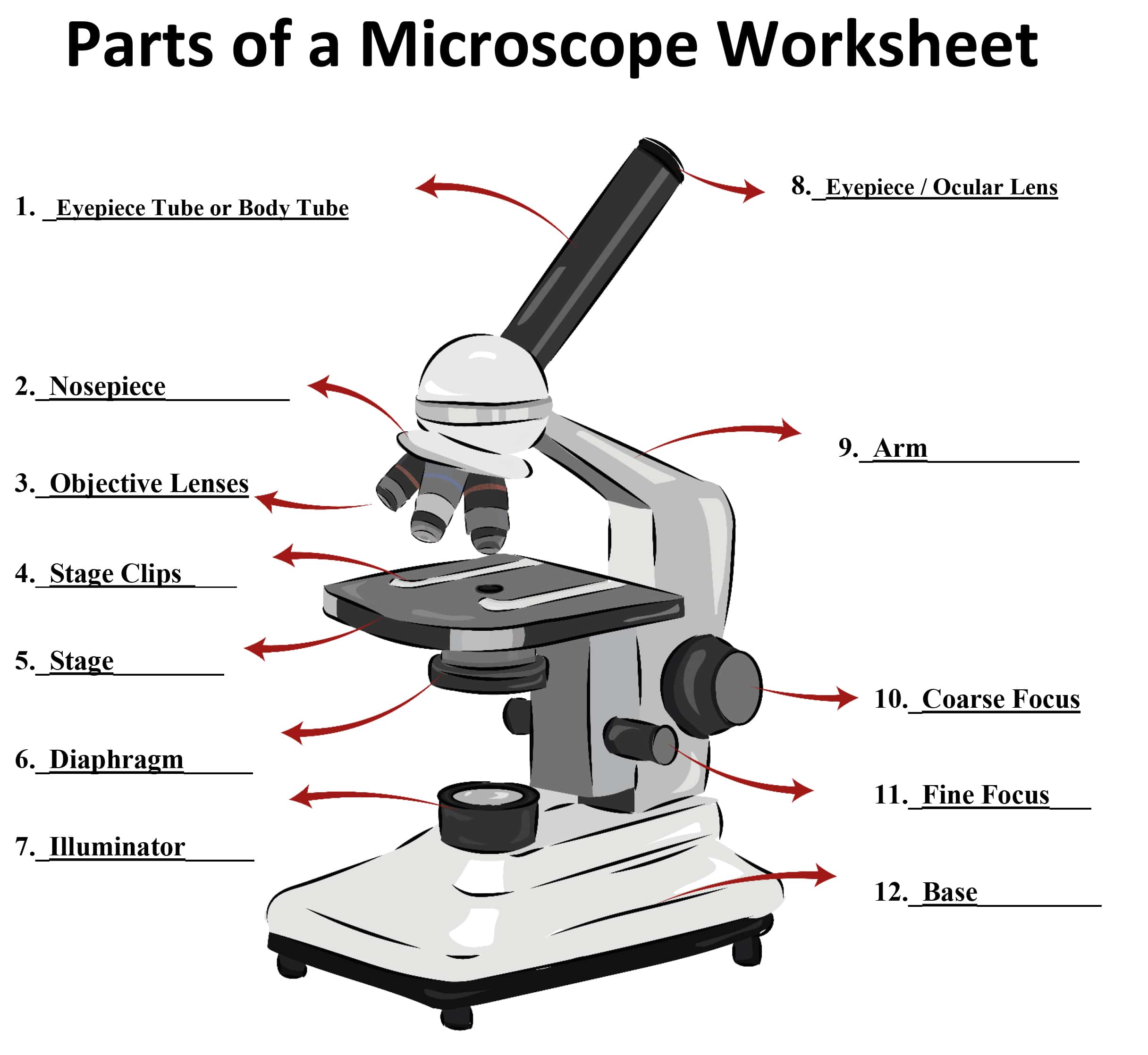



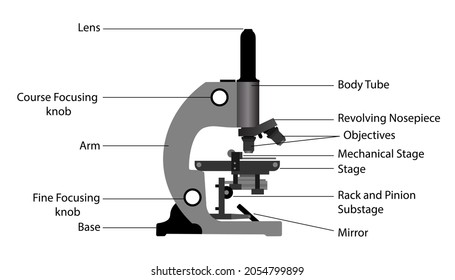




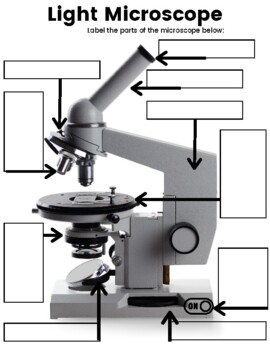


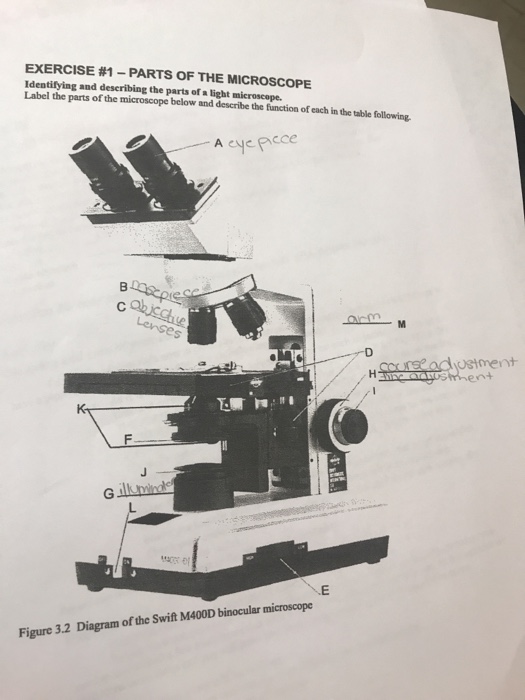

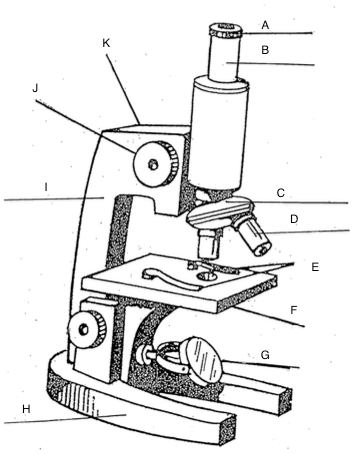
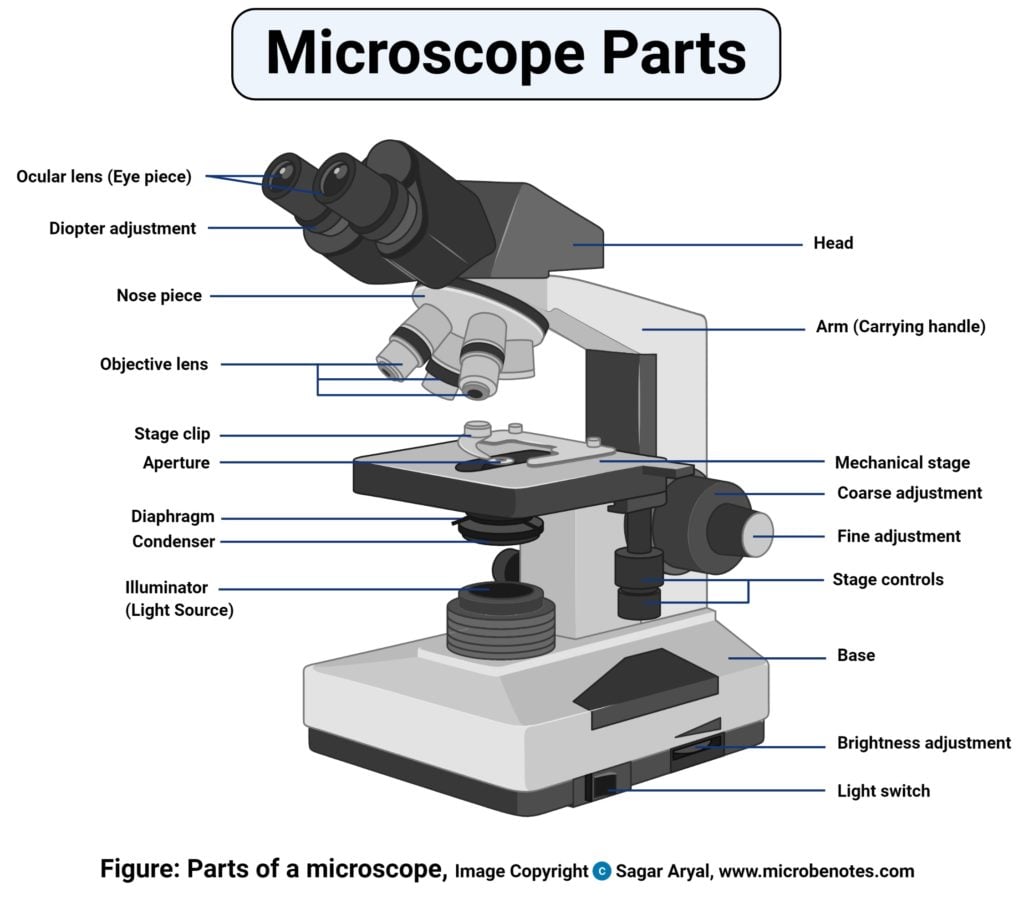
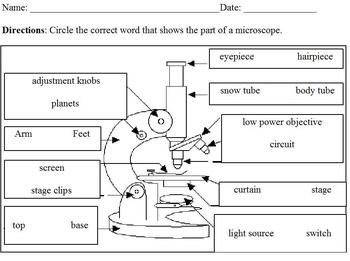


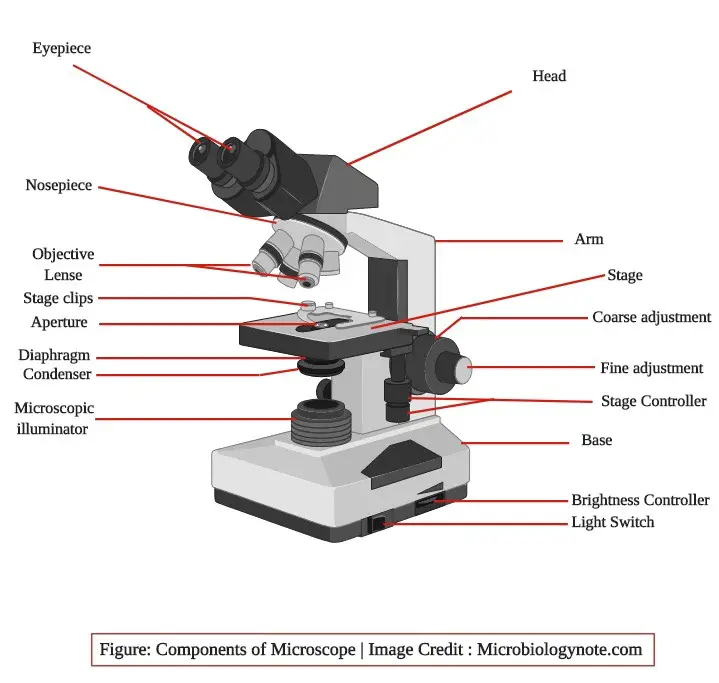
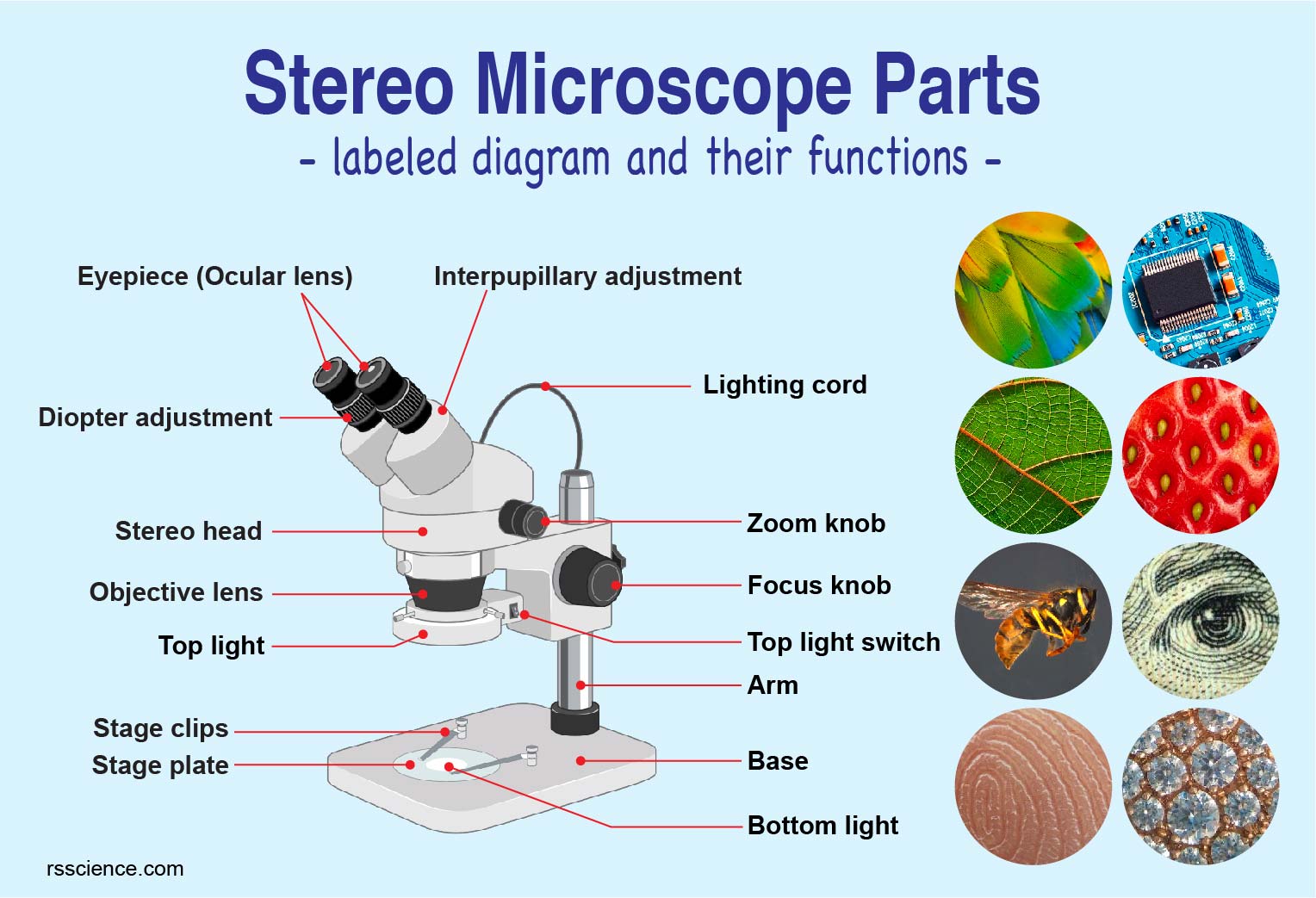



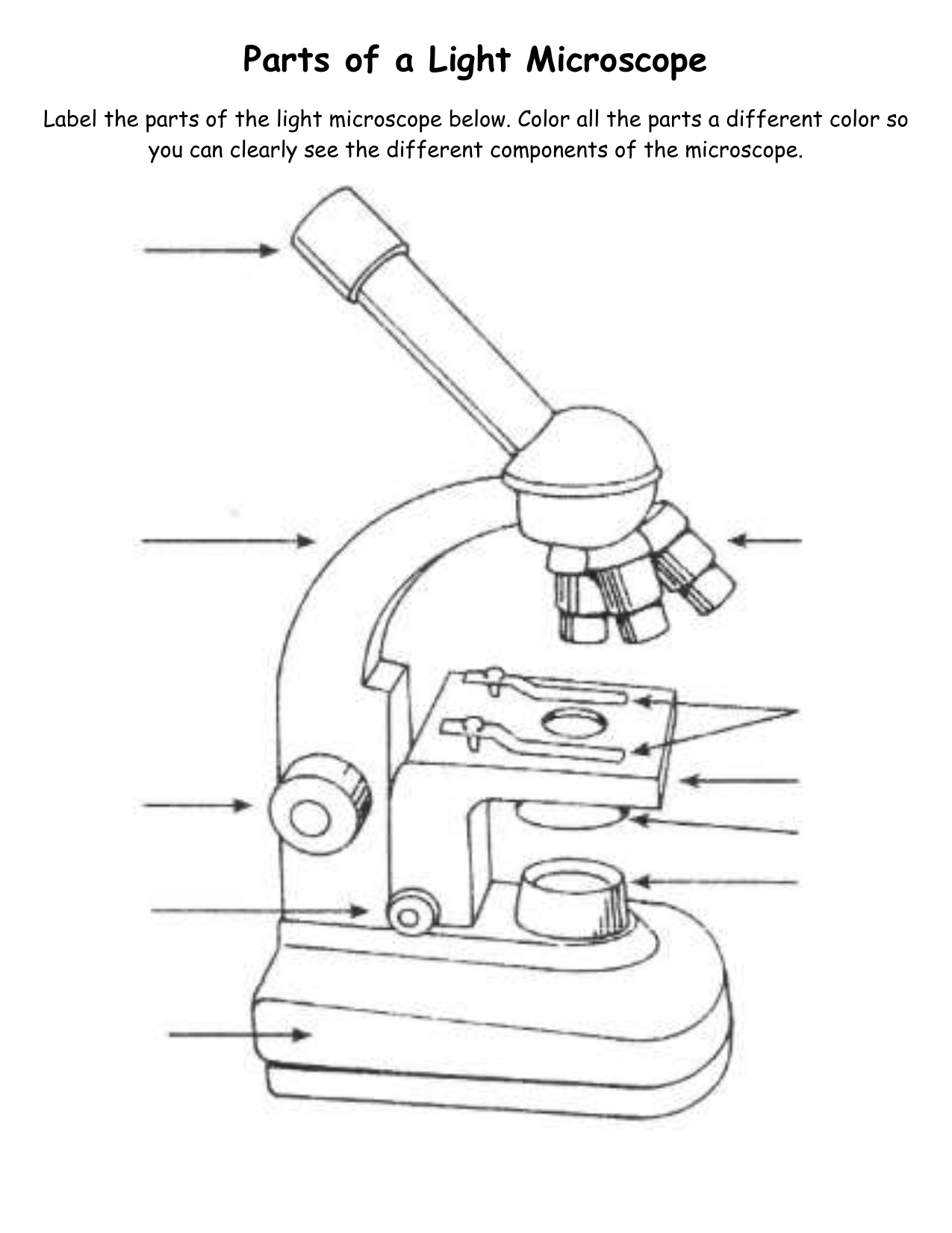


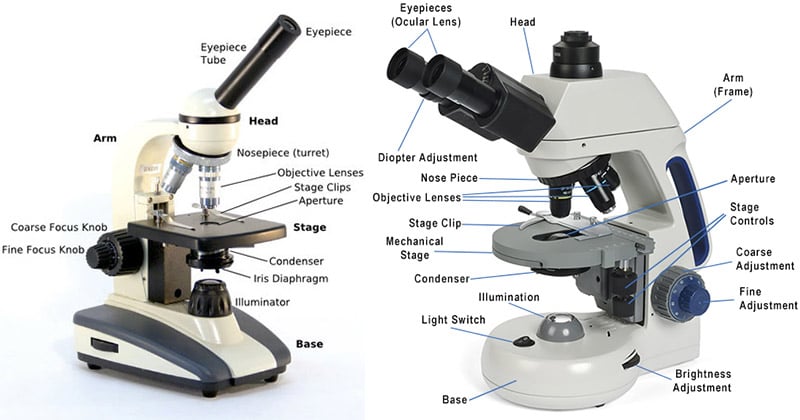
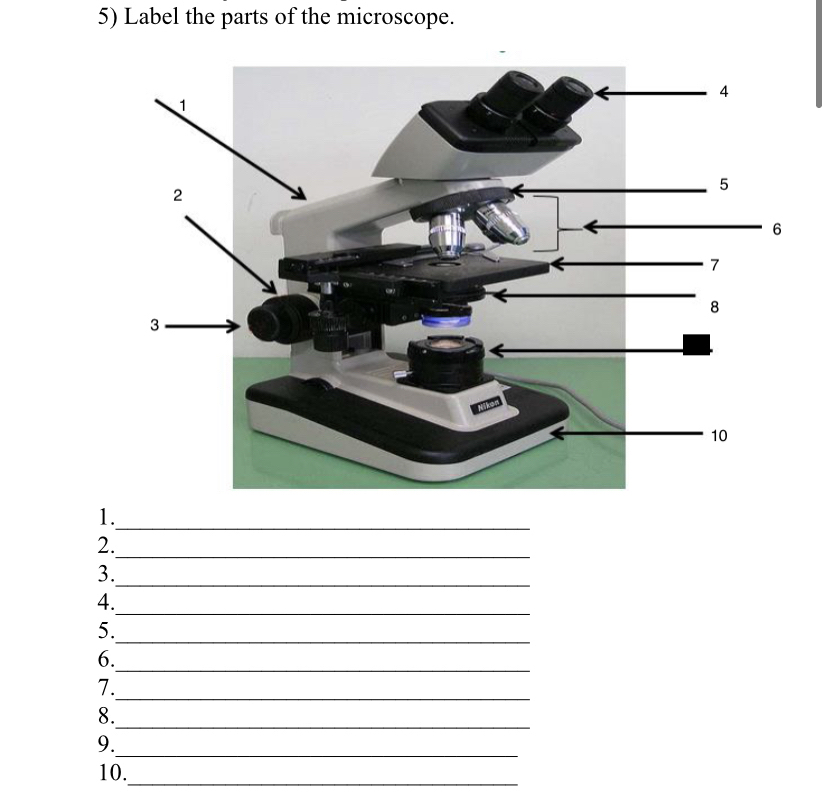

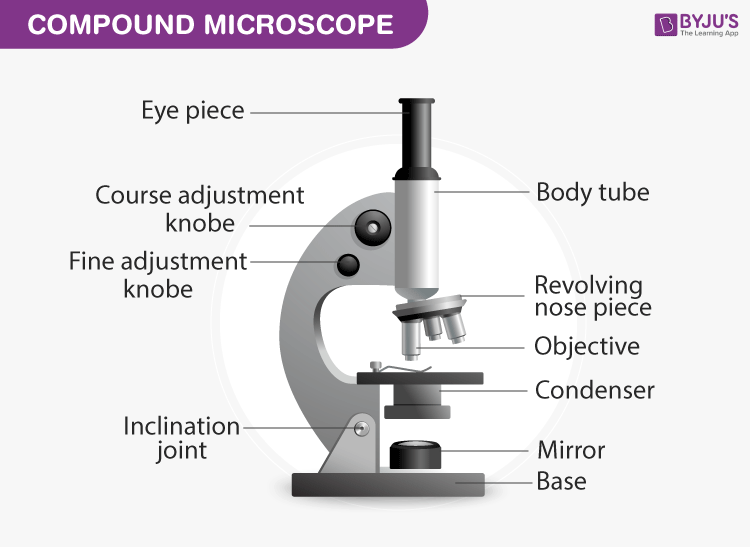

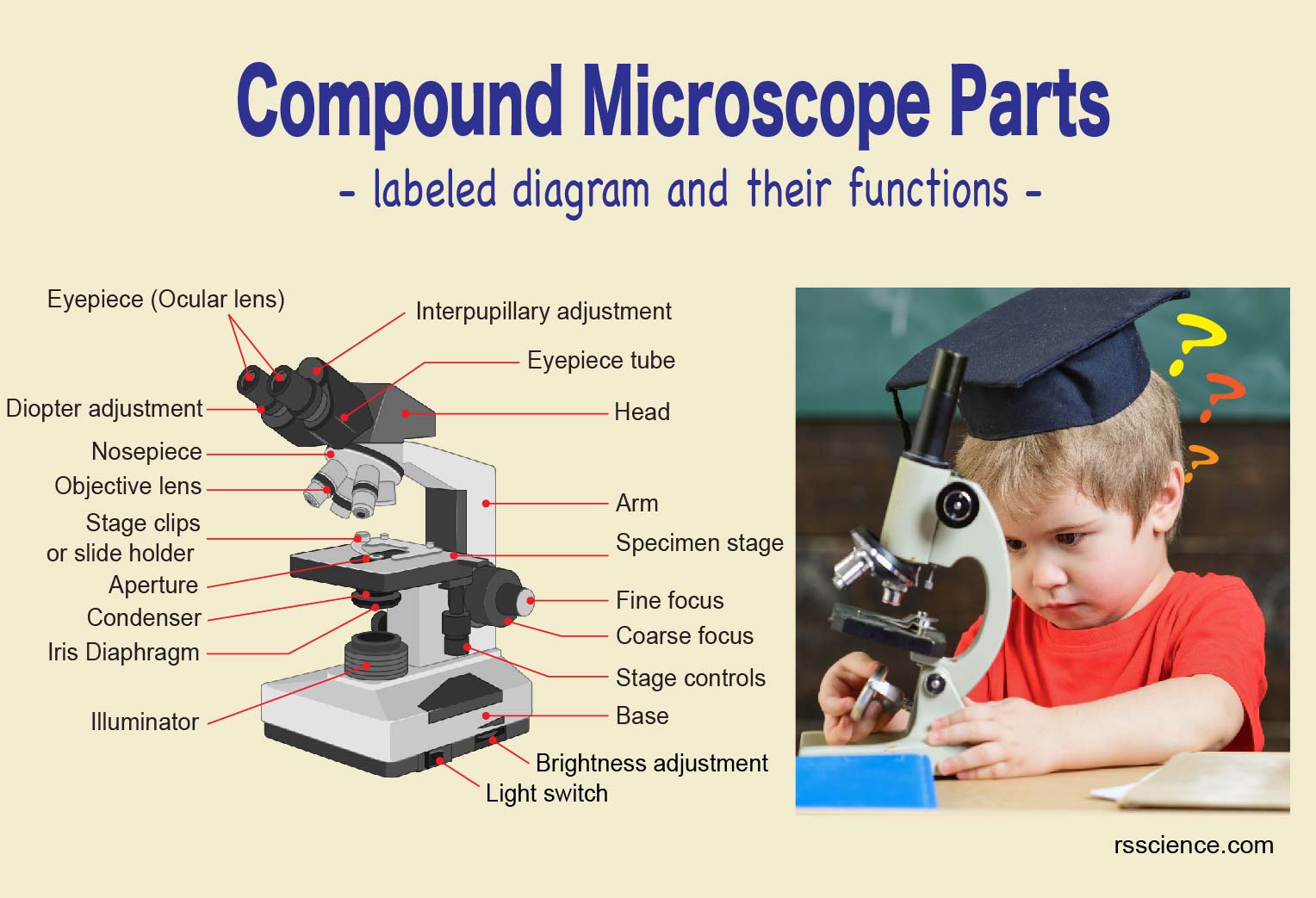


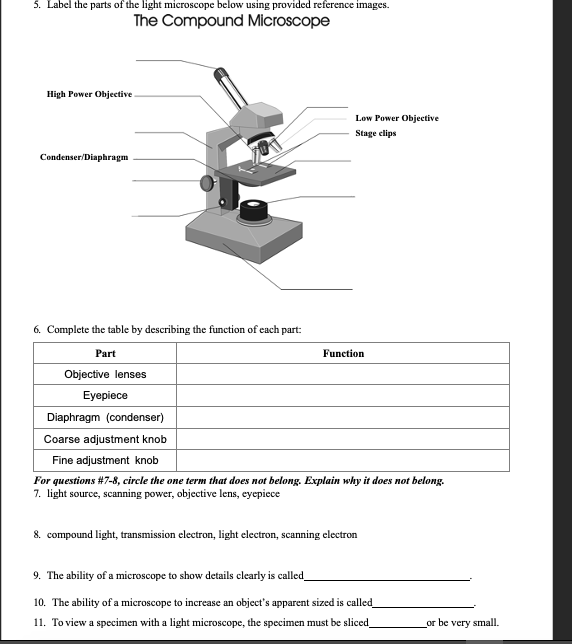




Post a Comment for "45 label the different parts of the microscope"